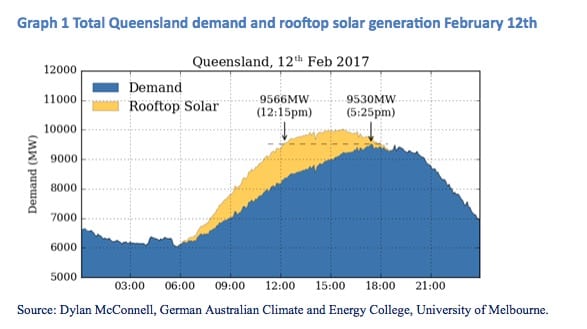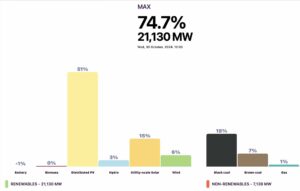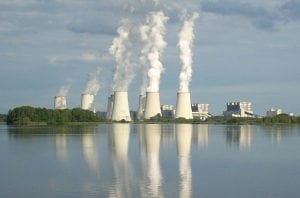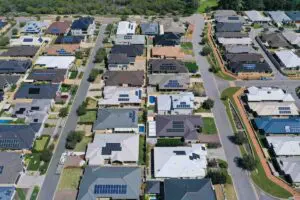A new report from the Australia Institute’s Climate and Clean Energy Program suggests that concern about reliability in Australia’s electricity market should be turned on its head: rather than renewables paying fossil fuel generators for back up, perhaps it should be the other way round.
The study – titled “Can’t stand the heat – the energy security risk of Australia’s reliance on coal and gas generators in an era of increasing heatwaves” – points out, as noted on numerous occasions on this website, that fossil fuel generators literally melted in the sun during the February, 2017 heat wave.
In all, some 3,600MW – or 11 per cent of total coal and gas generation – failed at the very moment that it was needed.
 Given that Australia is entering an era of dramatically increased heatwaves – and the country’s ageing coal and gas power stations are not designed for these conditions – the report says that perhaps it is these assets that should pay solar and storage facilities for “heat-safe” back-up.
Given that Australia is entering an era of dramatically increased heatwaves – and the country’s ageing coal and gas power stations are not designed for these conditions – the report says that perhaps it is these assets that should pay solar and storage facilities for “heat-safe” back-up.
The report serves to highlight one of the biggest inconsistencies of the proposed National Energy Guarantee, which appears to conflate the idea of “baseload” with “dispatchability”.
When the Australian Energy Market Operator talks of “dispatchability”, it is talking about technologies that it can count on to meet those critical peaks, almost invariably during summer heatwaves.
But the experience last February showed that many of these facilities could not be counted on. In New South Wales, 20 per cent of coal and gas generation (2438 MW) failed to deliver during the critical peak period, leading to load shedding at Tomago aluminium smelter.
 The report found, as the NSW Coalition government had identified previously, that it was solar power which prevented far worse disruption and load-shedding.
The report found, as the NSW Coalition government had identified previously, that it was solar power which prevented far worse disruption and load-shedding.
The analysis also found that during the February 2017 heat wave across south-eastern Australia:
- In South Australia, 17 per cent of gas-powered generation (438MW) was unavailable during the peak demand period that led to the 8th February blackouts;
- In Queensland, 7 per cent of coal and gas generation (790MW) was withdrawn in the four hours of the peak, leading to $13,000MWh prices eleven times within three hours;
- Across the NEM, 14 per cent (3600MW) of coal and gas electricity generation capacity failed during critical peak demand periods in three states as a result of faults, largely related to the heat.
The report concludes that retailers should be required to provide “heat safe” firming power to back up gas and coal plants.
This could include dispatchable solar thermal with storage, or additional PV, to reduce peak demand on hot days. This could be buttressed by battery storage to dispatch into the evenings.
“Gas plants failed on a grand scale during the heatwaves this year,” report author Mark Ogge said.
“Restarting mothballed gas plants and stop-gap diesel generators are not a long-term solution to reliability. Given the reliability problems with fossil generators during heatwaves, it would make more sense to require them, through the NEG, to provide firming power backup.
“Generators could be required to provide dispatchable solar thermal capacity, or additional PV to reduce peak demand on hot days, ideally with battery storage to dispatch into the evenings.
The analysis shows that without rooftop solar, the daily peaks that caused the blackouts, load-shedding and high price events would have been exceeded by:
- 4 hours 20 minutes earlier on February 8thin South Australia;
- 3 hours 25 minutes earlier on February 10thin New South Wales;
- 5 hours and 10 minutes earlier on February 12thin Queensland;
It is a useful report, given that the Energy Security Board, with its draft NEG thought bubble, has yet to identify what it really means by “dispatchability”, and appears to be intimating that coal and gas-fired generators would benefit from it.
This comes as federal energy minister Josh Frydenberg attended the launch on Friday of another bunch of energy claptrap – this time in the form of a report by the right wing Menzies Research Centre, lead authored by Tony Shepherd, the climate skeptic and renewable-hating former head of the Business Council of Australia.
Like most right-wing reports about renewables, it doesn’t even try to hide its ideological hatred of wind and solar, and it gets simple economics hopelessly wrong.
It says, for instance, that the large-scale renewable energy target cost more than $2 billion in 2016/17 – getting there by multiplying the number of certificates by the average market price.
But it ignores the fact that the spot market represents only a tiny fraction of the certificates acquitted – these are only bought by energy retailers too lazy to invest in their own solar and wind generation.
Menzies uses this fabricated number to argue that the cost of the RET is $300 a year to consumers, a number that created yet more howls of disapproval from the Murdoch media.
Yet the government’s own modelling for the National Energy Guarantee shows that the RET will deliver cost reductions of $300 a year to those consumers, because of the lowering of the wholesale prices that wind and solar cause.
The Menzies report then goes on to blame wind and solar for all the “reliability” ills of the market, and for the many recent price spikes.
Laughingly, it cites Queensland as the worst example of these price spikes. A little bit of research might have informed Menzies that there are no large-scale renewable wind and solar plants in Queensland and it is the state with the most amount of fossil fuel reserves.
Queensland’s price spikes, as its own government has acknowledged, were the result of outrageous (but legal) gaming of the markets by the fossil fuel generators – something the industry, and the BCA, want to preserve by introducing the National Energy Guarantee.
The rubbish goes on. Menzies wants “existing state subsidy schemes (to) be discontinued immediately and existing contracted commitments phased out”. And it wants nuclear in its place. Enough said. We hope the minister enjoyed himself at the launch.











